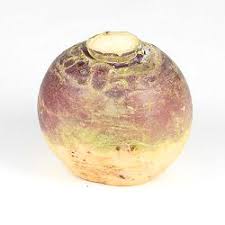
Introduction
Swede, an abbreviation for Swedish turnip, is extremely hardy, and grows well in cool, moist climates – it’s the perfect winter vegetable. Swedes need a constant supply of moisture to grow well and are happy in heavier soils. Try swede mashed with pepper or nutmeg and a little cream, it is absolutely delicious.
Seeding
Sow in an open, sunny site on moist, free draining soil that is very fertile and which, ideally, has benefitted from manure or garden compost as well as fertiliser containing trace elements, such as Vitax Q4.
Swedes need a firm seed bed. Sow from early May in the north to mid June in the south. Sow 2cm (¾in) deep in rows 38cm (15in) apart, and thin to 23cm (9in) apart.
They can be sown as plugs, in plant modules filled with multipurpose compost. Plant plugs out when the roots fill the cells.
Growing
They are a long term crop, taking up to six months to mature. Keep the soil moist and weed free thoroughout.
Thin out the seedlings when large enough to handle, leaving plants 23cm (9in) apart.
Water during dry periods but try to keep the soil evenly moist to prevent cracking and corky growth. Dryness at the roots can also lead to a bitter taste.
Troubleshooting Growing Problems
Powdery Mildew: Appears as a white powdery deposit over the leaf surface and leaves become stunted and shrivel.
Remedy: Keep the soil moist and grow in cooler locations.
Club root: Roots become swollen and distorted, and leaves become pale and yellow and wilt easily. Plants may die.
Remedy: Improve drainage and add lime to make soil more alkaline. Do not grow in affected soil.
Cabbage root fly: White larvae approximately 5cm (2in) long, feed on the roots just below the soil surface, stunting growth and causing plants to wilt and die.
Remedy: Grow under insect-proof mesh or horticultural fleece. Seedlings are most vulnerable.
Harvesting
Lift roots from September to November once large enough to use, or leave in the ground until Christmas. Cover with straw or bracken before the onset of cold weather. In cold regions store in containers of soil or potting medium in sheds or garages.
Companion Planting
Plant with: Celery, Beetroot, Onion, Shallots, Garlic, Chamomile, Spinach, Chard, Geraniums, Rosemary, Nasturtium, Borage
Recipes

Leave a Reply
You must be logged in to post a comment.